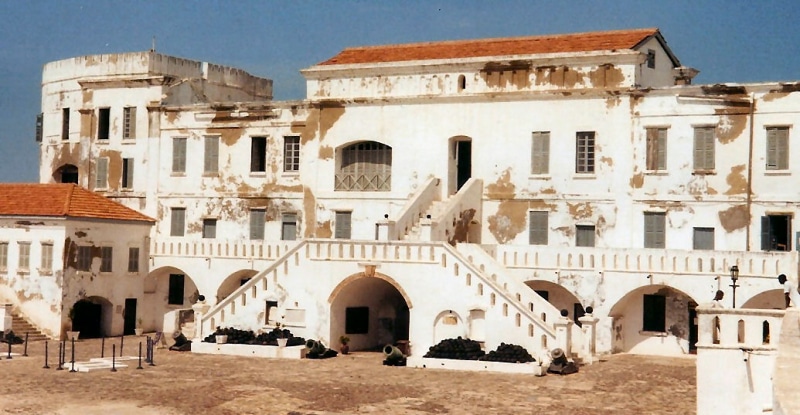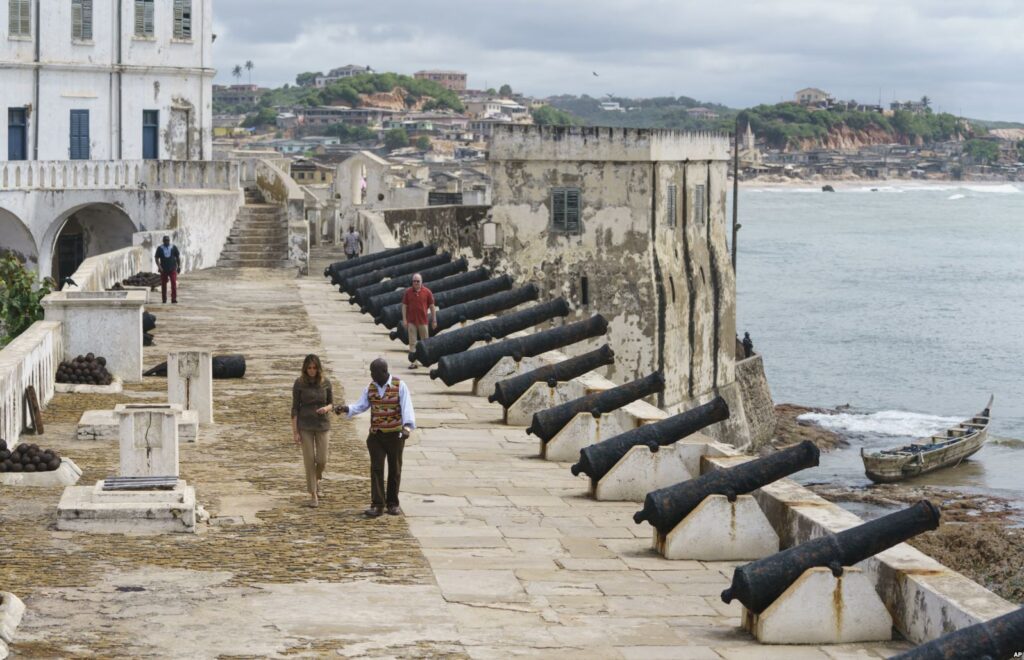Embark on a captivating journey through time as we delve into the storied past of Ghana’s historical forts and castles. Each fortress stands as a testament to the nation’s resilience, preserving the echoes of centuries gone by. Join us in this exploration of architectural marvels, poignant tales, and the cultural significance of Ghana’s historical landmarks.
Cape Coast Castle: A Gateway to Ghana’s Slave Trade History
Begin your journey at Cape Coast Castle, a UNESCO World Heritage Site that played a pivotal role in the trans-Atlantic slave trade. Explore the dungeons where enslaved Africans were held captive, walk the “Door of No Return,” and learn about the castle’s transformation into a symbol of remembrance and reconciliation.
Elmina Castle: The Oldest European Building in Sub-Saharan Africa

Discover the haunting history of Elmina Castle, the oldest European building in Sub-Saharan Africa. Built by the Portuguese in the 15th century, the castle later changed hands and became a center for the slave trade. Dive into the stories of resilience and survival as you explore its chambers, courtyards, and picturesque seaside setting.
Fort Amsterdam: A Dutch Legacy on Ghana’s Coastline
Explore Fort Amsterdam, a Dutch fortress situated in Abandze. This well-preserved structure offers a glimpse into Ghana’s colonial past and the influence of European powers on the region. Climb its battlements for panoramic views of the coastline and reflect on the shared histories encapsulated within its walls.
Fort Saint Anthony: Portuguese Heritage in Axim
Step into the historical ambiance of Fort Saint Anthony, a Portuguese fort in Axim. Built in the early 16th century, this fort stands as a reminder of the early European explorations along the West African coast. Explore its architecture and imagine the centuries of maritime activities that took place within its confines.
Fort Metal Cross: A British Legacy in Dixcove
Uncover the British legacy at Fort Metal Cross in Dixcove. This well-preserved fort showcases the architectural finesse of British military construction. Walk through its arched tunnels, climb the bastions, and appreciate the strategic location overlooking the Gulf of Guinea.
Conclusion: Ghana’s historical forts and castles offer a profound journey through the annals of time, revealing the complex layers of the nation’s past. As you explore these architectural wonders, you’ll gain a deeper understanding of the resilience of the Ghanaian people and the impact of trans-Atlantic trade on the region. Join us on this immersive heritage experience, where each fortress stands as a guardian of history, inviting you to reflect on the shared narratives that have shaped Ghana’s cultural landscape.

0 Comment